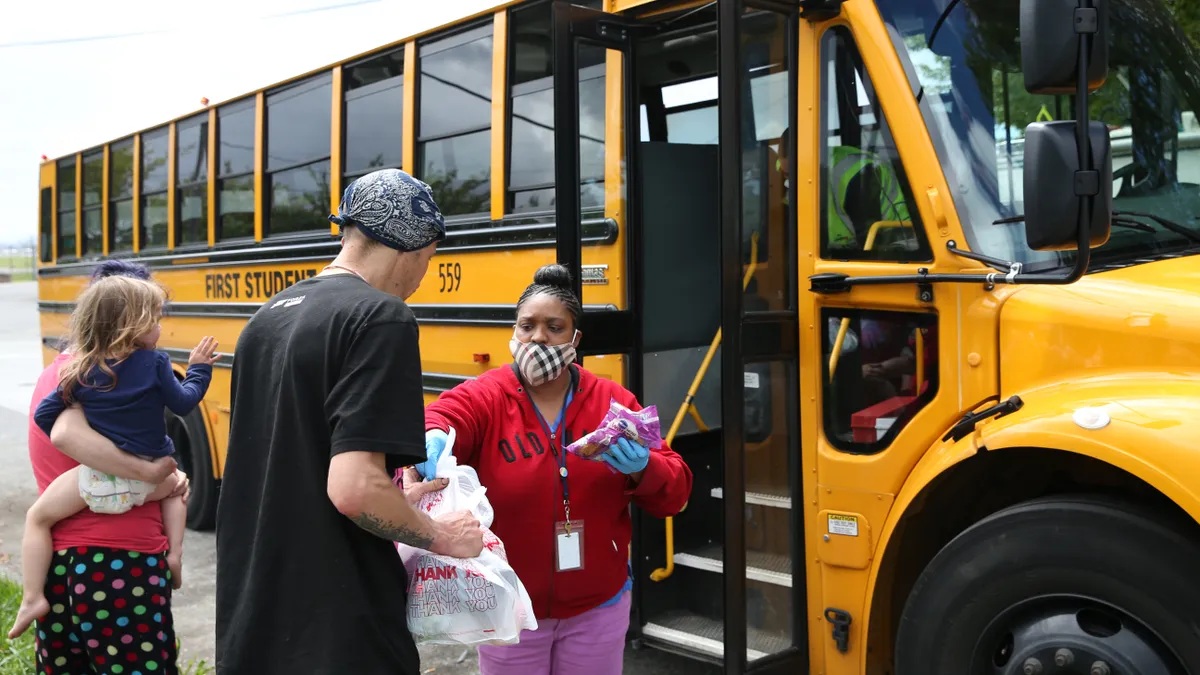The return to full-time, in-person learning may lead teachers and administrators to relax their heightened attention to communication and relationship building with parents regarding the safety, academic, and social and emotional status of their students, but the exchange of information between home and school is as important now as it was during the first year of the pandemic, say teachers, parents and education stakeholders.
One of the bright spots from K-12 education during the public health crisis has been stronger connections between parents and educators due to the need for collaboration during virtual learning, in-person safety protocols and more. Those home-school connections can have positive impacts on student learning, as research from the Columbia Law School Center for Public Research and Leadership recently revealed.
School systems will also need to continue to be proactive in their informational outreach and attention to individual students’ needs in order to retain and attract families whose options for their children’s schooling have expanded beyond the traditional public school campus during the pandemic. Other options families are exploring include independent virtual schools, public charter schools, learning pods, private schools and homeschooling.
Isis Spann, a parent of four and public school teacher in South Carolina, said she became more vocal about her children’s educational needs during the pandemic. She also founded a math learning pod and is CEO of FUNdamentals of Learning, an educational consulting company.
“Last year for me was really holding the school accountable for what they were already supposed to be doing for my children and not feeling like, as an educator, I had to take that on,” Spann said during a virtual press briefing Tuesday hosted by Bellwether Education Partners.
The movers, missed and muted
There were 11.3 million students — nearly 1 out of 5 — who were overlooked in the past 18 months because they moved schools, did not enroll in formal schooling, or couldn't access their preferred type of schooling, according to a report released Tuesday by Bellwether Education Partners. The research refers to these students as “movers,” “missed” and “muted.”
The research also found the largest growth in homeschooling from spring 2020 to fall 2020 was from Black families, with a 12.8 percentage point increase, and Hispanic families, with a 5.9 percentage point increase. A recent report from Education Next, however, found little change between the enrollments of children attending district, charter, private and home schools between May 2020 and June 2021.
Traditional public schools will need to be responsive to families' needs and adjust structures to better meet the demands for personalized education, said Alex Spurrier, a senior analyst at Bellwether and lead author of the report, who spoke during the virtual press briefing.
“I think the jury's still out in terms of like how long-term these changes will be, but I think that there's a likelihood that they will persist in some form, and even if it's just a portion of these 11.3 million families, it's still a significant change to a lot of school systems,” Spurrier said.
Spann emphasized the need for schools and families to work together on behalf of students and communities, especially in supporting underserved populations. Everyone should have opportunities to be innovative to improve access to quality education, she said.
“We all think differently but we have to first recognize that children are not okay,” Spann said. “They haven't been okay for the last 18 months. Black and Brown families haven't been okay before the pandemic.”
Building connections, collaborations
While there are best practices that have emerged from the pandemic about engaging families and students, education stakeholders say those practices need to be enhanced and expanded upon moving forward. In other words, schools need to be more proactive about cultivating relationships with families, including those who are English learners, those with students with disabilities, and those without internet access.
Among the approaches centered around specific topics are:
-
Sharing COVID-19 safety information. Communication from school to home about safety protocols has been constant since March 2020 due to changing health conditions and safety protocols. The rise of the highly transmissible delta variant caught many by surprise as they were just weeks away from what was supposed to be a more typical school year. Instead, many districts had to quickly determine quarantine policies.
Many school systems issue weekly newsletters to keep the school community up-to-date on safety policies and conditions, as well as provide updates on social media feeds and emails. The Idaho School Boards Association provided best practice tips to its members about school communications during COVID-19.
Recommended practices include using language that is honest but also calming and reassuring. ISBA also provided template letters for parents, staff and community members and a template media press release about positive COVID-19 cases. -
Setting academic expectations. Collaborations and communications with parents about academic needs will need to remain strong. These efforts should also be consistent schoolwide, advised a June paper from the Center on Reinventing Public Education. Administrators can help develop expectations and responsibilities for building effective partnerships with families.
This should include defining the roles of teachers and other non-teaching staff, such as guidance counselors, in parent outreach. It also means ensuring staff have adequate time and professional development to effectively engage and support families, the CRPE paper said.
Last year, teachers in Salem Public Schools in Massachusetts had difficulty keeping track of which students were in quarantine, for how long and what individualized supports they needed. The district hired dedicated remote tutors to support temporary online learners and developed protocols for identifying and tracking remote students. -
Providing social-emotional supports. According to the Education Next survey, parents and teachers are aligned that schools should provide just as much focus on student academic performance as they do on student social-emotional wellbeing.
Metro Nashville Public Schools in Tennessee implemented a Navigators program for staff to keep in regular contact with families. Around 5,600 MNPS staff members are responsible for six to 12 families each and could help refer families to counselors and social workers if needed, or arrange food supplies and technology supports. -
Promoting accomplishments and connections. The seriousness of the pandemic and the urgency to accelerate learning may leave the celebratory aspects of school as an afterthought. Back to School Nights, whether in-person or virtual, can be promoted as moments to honor parents, staff and students.
Last year, the Dallas Independent School District in Texas created a home visitation program where teachers went to students' homes to ask the students about their interests and goals, and to strengthen the home-school connection.
Melvin H. Kreps Middle School in Windsor, New Jersey, kept up school spirit last year by holding several virtual dance and costume challenges to help bring “smiles to everyone’s faces,” Assistant Principal Chris Edwards wrote earlier this year for MiddleWeb.










